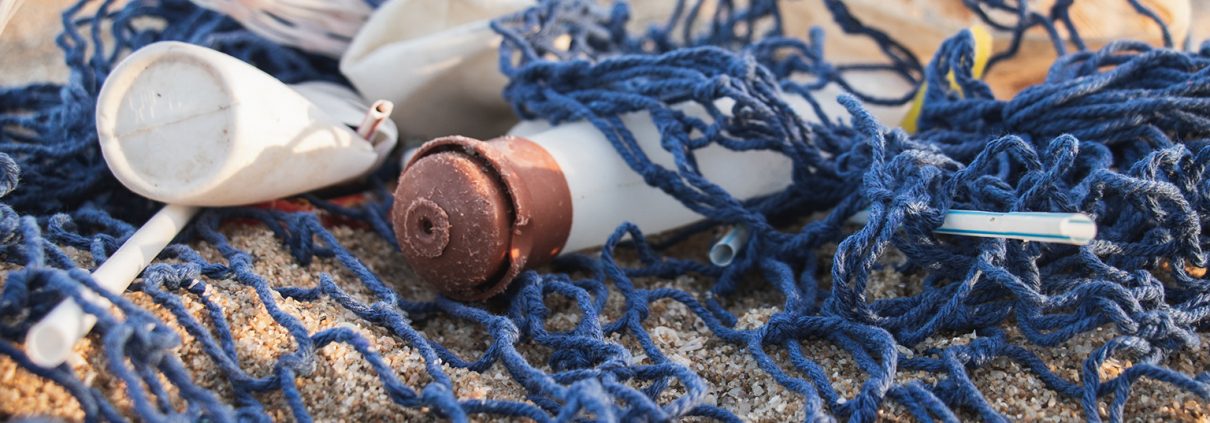Sacramento – Today the California Ocean Science Trust (OST), the Ocean Protection Council (OPC) and a group of leading interdisciplinary scientists released a new report which provides guidance for addressing microplastic pollution in California’s marine environments and assessing the risk these tiny plastics pose to marine ecosystems, marine animals and humans. The report – Microplastic Pollution in California: A Precautionary Framework and Scientific Guidance to Assess and Address Risk to the Marine Environment – recommends California officials work proactively to manage microplastic waste and reduce microplastic materials at their source considering several factors. The state-supported report can be accessed here.
The Microplastic Pollution in California report shares scientific guidance for risk assessment and management of microplastics including the following recommendations:
- California officials should assess and manage microplastic pollution risk in a precautionary manner that is protective of the marine environment and to focus on concentration of microplastics in the aquatic environment while the scientific community learns more about toxicity impacts of plastics and associated pollutants.
- Reducing the sources of microplastics may be the most effective and precautionary measure.
- Identifying the top sources of micro- and macro-plastic emissions into the marine environment in California is crucial for assessing risk and stopping the flow of microplastics now and into the future.
- As science on microplastics evolves, the state should revisit the framework in five years.
The Ocean Protection Council Science Advisory Team working group (Working Group), convened by OST, created the report in response to a 2018 request from the state legislature (SB 1263) to better understand the scale and risk of microplastics. The Working Group recommendations include a technical framework for addressing microplastic pollution and prioritized knowledge gaps to better understand the issue.
“Microplastics have been found in all corners of the world, as well as in us: in every ocean, Antarctic sea ice, deep-sea trenches, the air we breathe, agricultural soils, and even in human placentas. As a scientist who studies the occurrence and impacts of microplastics in fish and other marine biota, the best approach to protecting ocean health is to curb pollution at its source.” – Dr. Susanne Brander, Oregon State University, Working Group Co-chair
Scientific knowledge of microplastics is still growing, but the group recommends the State take a precautionary approach in its response because plastic production is expected to continue to increase and plastics don’t degrade in the same way as other materials. Evidence shows microplastics contaminate and can harm marine life and humans. Current tools and the large scale of pollution make mass cleanups too challenging. The Working Group stresses that the State reduces microplastic materials at their source.
“Reducing and eliminating plastic pollution is a top priority for a healthy ocean and coasts, and California is leading the way towards action on this persistent pollutant. This report will inform the State’s actions on microplastic pollution, and will inform OPC efforts to develop a Microplastic Strategy for California by the end of the year ” – Holly Wyer, OPC Marine Pollution Program Manager
The Working Group calls for more California-specific research identifying the largest sources of microplastic pollution to inform appropriately-targeted source reduction activities. They note that in California, existing evidence suggests that microfibers from textiles, as well as tire and road wear particles, are the most common types of microplastic materials found in the marine environment to date. Additionally, stormwater runoff in both agricultural and urban settings contribute a large share of microplastics into the marine environment, although microplastic loading via air and wastewater treatment should be watched closely. The Working Group noted that even smaller plastics (e.g.nanoplastics) may be more harmful to marine life and humans, but more research is needed on this topic.
“This effort is a prime example of how California is leveraging science and partnerships to identify a roadmap towards healthier and more productive coasts and oceans. This team of experts is pointing California towards action on a very visible issue.”
– Kiya Bibby, Senior Science Officer, California Ocean Science Trust
The Working Group included:
Dr. Eunha Hoh, San Diego State University (co-chair)
Dr. Susanne Brander, Oregon State University (co-chair)
Kenneth Unice, MS, Cardno ChemRisk (co-chair)
Anna-Marie Cook, MS, U.S. Environmental Protection Agency (retired)
Dr. Rusty Holleman, University of California, Davis
Dr. Chelsea Rochman, University of Toronto
Dr. Julie Thayer, Farallon Institute




